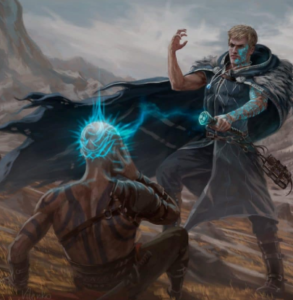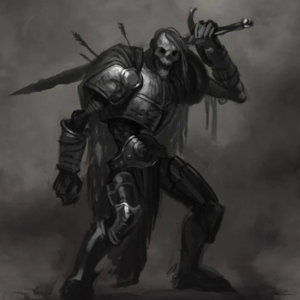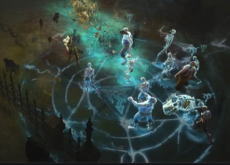You perform one among several religious ceremonies. once you cast the spell, choose one among the subsequent ceremonies, the target of which must be within 10 feet of you throughout the casting.
A master of ceremonies may be a frontline bulwark, confident to face against those that would desecrate their beliefs or their allies using their natural affinity as a commander and performing ceremonies to bring down the wrath of above on their foes and protect their allies.
Ceremony 5e

- Casting Time: 1 action
- Range: Touch
- Components: V, S, M (25 GP worth of powdered silver)
- Duration: Instantaneous (see below)
- You touch one willing creature whose alignment has changed, and you create a DC 20 Wisdom (Insight) check. On a hit, you restore the target to its original alignment.
- Bless Water. You touch one vial of water and cause it to become holy water.
- Coming aged. You touch one humanoid sufficiently old to be a young adult. For the subsequent 24 hours, whenever the target makes a capability check, it can roll a d4 and add the amount rolled to the power check. A creature can enjoy this ceremony one time.
- You touch one humanoid who would willingly convert to your religion or who wishes to be dedicated to your god’s service. For the subsequent 24 hours, whenever the target makes a saving throw, it can roll a d4 and add the amount rolled to the save. A creature can enjoy this ceremony one time.
- Funeral Rite. You bless one corpse within 5 feet of you. For the subsequent 24 hours, the target can’t become undead by any means in need of a Wish spell.
- You touch one willing humanoid. Choose one 1st-level spell you’ve got prepared and expend a spell slot and any material components as if you were casting that spell. The spell has no effect. Instead, the target can cast this spell once without having to expend a spell slot or use material components. If the target doesn’t cast the spell within 1 hour, the invested spell is lost.
- You touch adult humanoids willing to be bonded together in marriage. For the subsequent 24 hours, each target gains a +2 bonus to AC and saving throws while they’re within 30 feet of every other. A creature can enjoy this ceremony one time.
- Spell Lists. Cleric, Paladin
For the spell to be effective, the caster had to return into physical contact with the target creature. The spell allowed the caster to perform a spread of rites:
- Atonement: The cleric was ready to restore a creature to its natural alignment.
- Bless Water: Transformed a vial of water into water.
- Coming of Age: When used on a young creature, they temporarily gained the talents of an adult.
- Dedication: Used when a creature became dedicated to the cleric’s deity.
- Funeral Rite: Prevented a corpse from becoming undead for up to every week.
- Wedding: Used during wedding ceremonies.
These individuals are champions of certain causes, granted powers to enact act as a god’s champion on the fabric Plane. By entering this pact with a god, they conform to the life of service dedicated to the god and its causes.
Whenever an impact damages you or causes you to form a saving throw and before the result of the roll has been determined, you’ll use your reaction to form you and one allied creature within 30 feet of you become proof against all sorts of damage and have advantage on all saving throws from magical effects until the beginning of your next turn. You’ll use this effect twice, and you regain all uses of this effect once you finish an extended rest.

Virat Rana is a Blogger from the city of Joy, Kolkata. He is the founder of this blog and covers a wide range of topics from Gadgets to Software to the Latest Offers. You can get in touch with him via [email protected]


 Casting Time: 1 action
Casting Time: 1 action





